Earth is home to an array of truly creepy animals that walk or swim, often startling those who come across them, particularly when encountering cave-dwelling species. These eerie creatures, which have evolved to thrive in complete darkness, exhibit fascinating adaptations such as lack of colorful pigmentation, resulting in their ghostly white or occasionally black appearance, aiding in blending with their environment. Many of these cave-dwellers are blind, relying on other senses and communication for survival and mating. Some species exclusively inhabit caves, while others frequent the caves for shelter, making them synonymous with this unsettling environment. Thus, our list will distinguish whether a species resides in caves entirely, most of the time, or only occasionally.
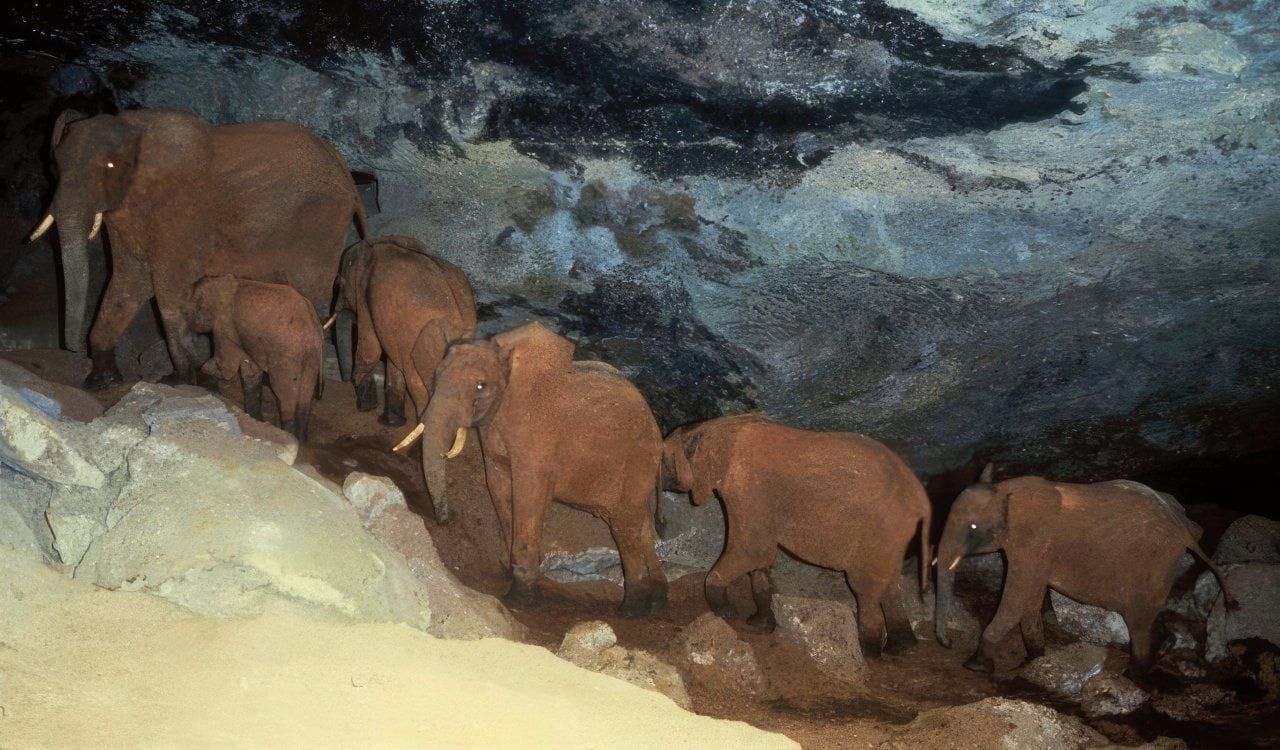
Kitum Cave Elephants
- Usually Found: Mount Elgon National Park, Kenya
You likely did not expect to see elephants on this list. Who would? When the Kitum Cave was first discovered, archeologists found several marks, scratches, and furrows along the walls. It was thought to be the work of picks that Ancient Egyptians likely used during their search for diamonds and gold. However, what actually happened was that local elephants had essentially excavated the cave for a long time. Many animals came through here, often in complete darkness. The elephants got tired of getting stuck in the dark and did a lot of digging. These elephants also discovered that the cave had salt, so when they pulled off parts of the caves or smashed through them, they could lick up the salt. Sadly, many elephants have died in the cave…but they opened a path for many more to make a home here.
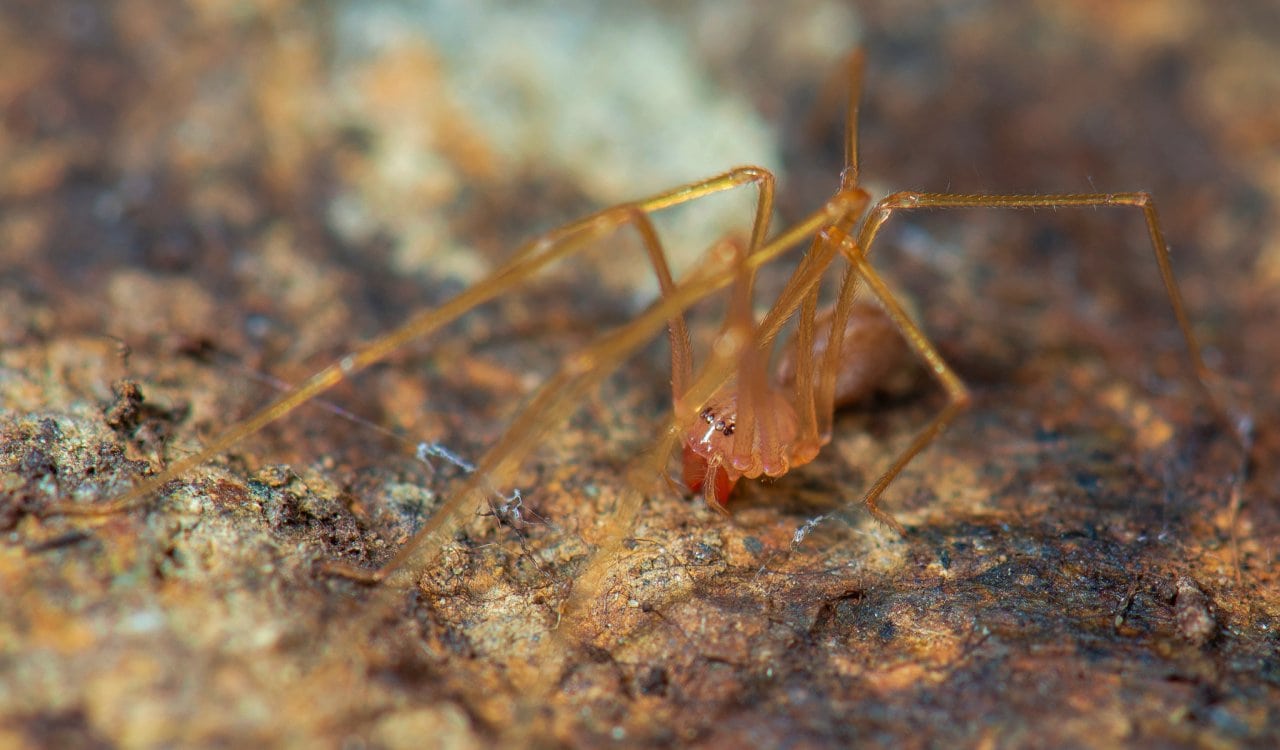
Cave Robber Spiders
- Usually Found: In The Caves Of Southwestern Oregon, USA
While the true name of the species is the “Trogloraptor,” this translates to “cave robber,” leading to the name it has today. The Cave Robber Spider is relatively large and usually found in the southwestern caves in Oregon. They are traditionally yellow-brown in color with 3-inch legs. They are known most for the hook-like claws on the raptorial last segments of their legs. The species has been known since around 1990, but they were not fully described until the 2010s by biologists and specifically arachnologists. When this took place, many felt this might explain the legends of giant cave spiders in the area. We can clearly see how that happened when looking at it, as they truly are creepy animals that anyone would freak out about seeing.
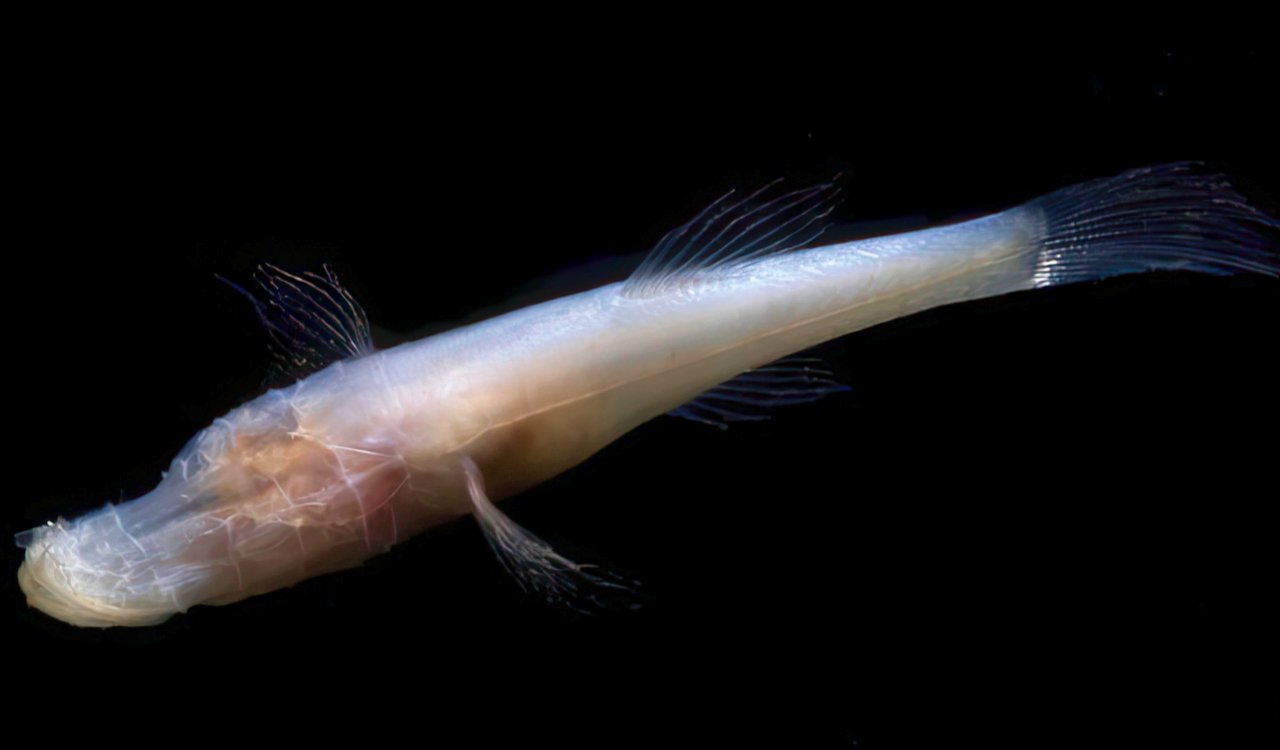
Alabama Cavefish
- Usually Found: In Key Cave, NW Alabama, USA
We’ll give you one guess where you can find this species. Too late! These creepy animals are found in the underground pools in Key Cave, located in Northwestern Alabama. Alabama Cavefish were actually first discovered underneath a colony of gray bats back in 1967 by Robert A. Keuhne and John E. Cooper. It would not be scientifically described until 1974, however. Sadly, it is often hard to come across them as the species is now critically endangered. It is estimated only 100 remain as of this writing, making it the rarest cavefish species in the United States. The species is pretty much completely white and lives entirely off of nutrient-rich guana from gray bats in the cave. It is thought that Alabama’s flooding problems, specifically for Key Cave, have led to the major decline along with its fragile ecosystem.

Tooth Cave Pseudoscorpions
- Usually Found: In The Caves Of Travis County, Texas, USA
Don’t be fooled by this scorpion imposter, for it is actually an arachnid! You’ll typically find them in the caves of Travis County, Texas but they have sometimes been seen in caves nearby this region too over the years. We weirdly do not know much about the Tooth Cave Pseudoscorpion. Therefore, its entire biology, life cycle, and even life history are a complete mystery. However, we do know it is currently endangered. What we do know is that this pseudoscorpion can sometimes look odd to people, as it has the pinchers in the front of a scorpion, as well as a harder shell, but the rest of the body is spider-like. The exoskeleton is a lighter red color due to being found only in caves, while the legs and rest of the body are a lighter tan color.

Oilbird
- Usually Found: Caves In Northern Territories Of South America
The Oilbird gets its name honestly. It sort of looks like it took a swim in a BP Oil Spill. The species is traditionally found in northern territories of South America, as well as in the Caribbean island, of Trinidad. They can be creepy animals to see because they are not just weird-looking but operate differently compared to most other bird species. First off, most of the nesting colonies are found in caves. Second, they are nocturnal feeders. They will usually eat fruits only though. Oilbirds are actually the only nocturnal flying fruit-eating bird species on the planet. They have incredible eyesight as most nocturnal birds do, and use echolocation for navigational purposes. To do this, the species creates high-pitched clicking sounds that get up to 2 kHz that we as humans can hear. Although, there are other pitches they produce we cannot hear.

Texas Blind Salamander
- Usually Found: San Marcos, Hays County Region of Texas, USA
It might shock you to learn this, but the Texas Blind Salamander is found exclusively in Texas. We know, we were startled by this as well. Particularly, they are native to the San Marcos, Hays County region. Normally, you can see them in the San Marcos Pool of the Edwards Aquifer. They appear similar to at least one or two other creatures we’ll discuss on the list, so keep an eye out for that. Ironically though, this amphibian is blind due to its lack of need for eyesight in the cave environment. This is not surprising for a species like this, as most exclusive cave-dwelling creatures have no eyesight or very reduced eyesight. It should be noted that this creature is rarely seen even in its natural habitat. The Texas Blind Salamander is considered “vulnerable” according to the International Union for Conservation of Nature.
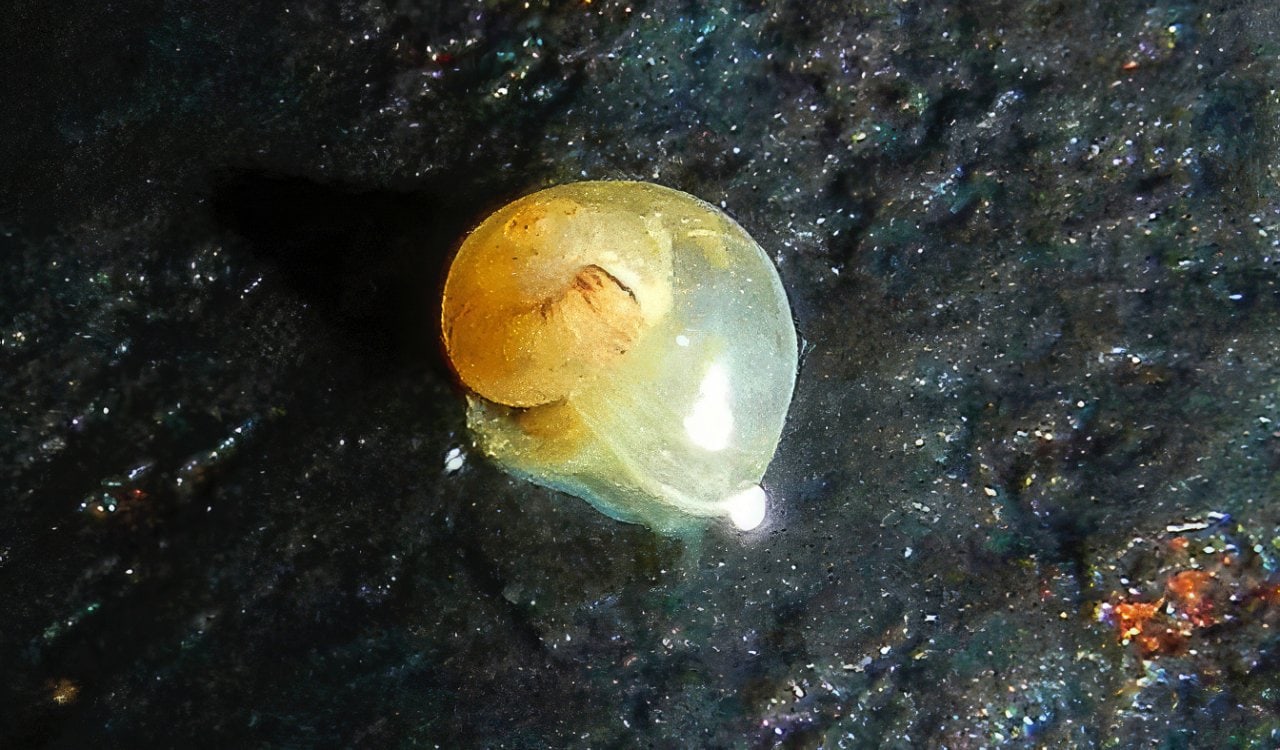
Tumbling Creek Cavesnail
- Usually Found: In Missouri, USA’s Tumbling Creek Cave
The Tumbling Creek Cavesnail was first described by Leslie Hubricht back in 1971 after specimens of the species were brought in for study in 1969 and 1970. The species is part of the Antrobia culveri line, a genus type for the Antrobia. This was a relatively new species at the time, so the discovery of this cavesnail was pretty big. This snail is found in the Tumbling Creek Cave, which is a National Natural Landmark in Taney County, Missouri. The snail is relatively small, white, and totally blind. It’s also aquatic, so it has gills to use in the water. The shell is well-rounded, conical, and usually pale yellow. Sadly, due to it being relatively unique among the snail population, the species is currently endangered.
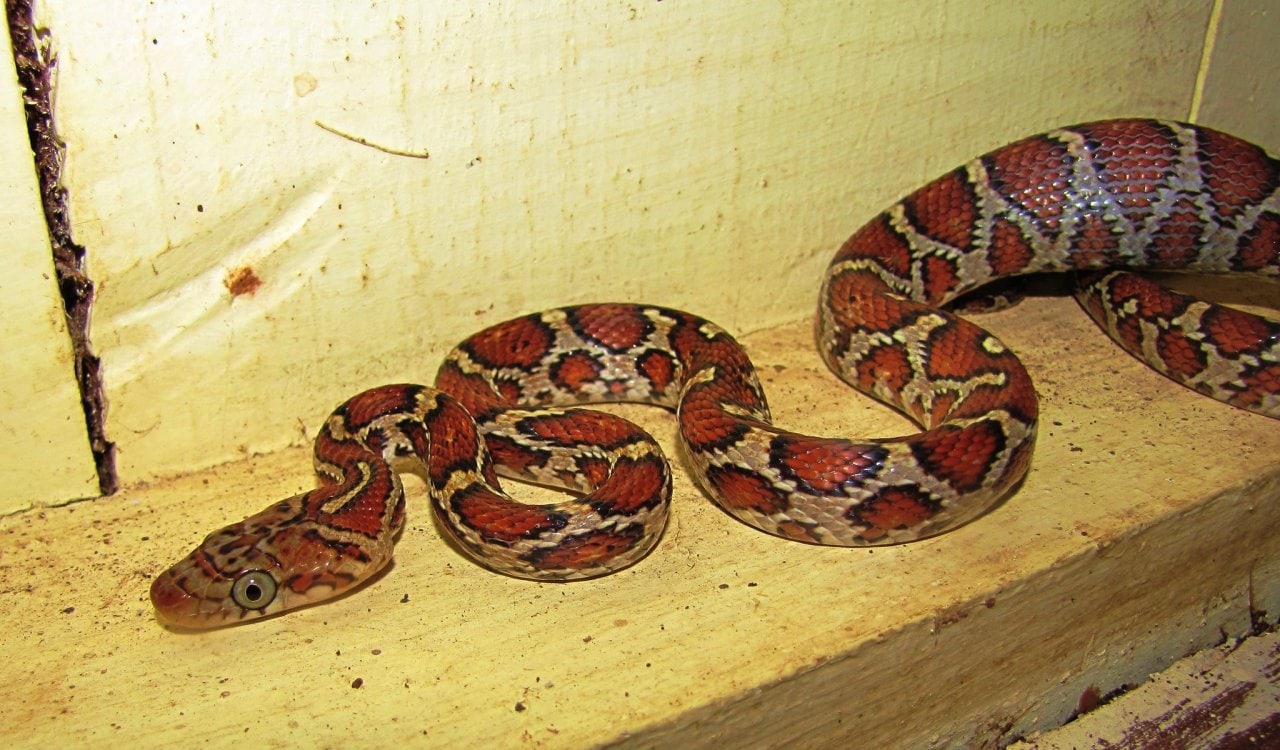
Yellow-Red Rat Snakes
- Usually Found: Most of Mexico & Central America
The Yellow-Red Rat Snake species is likely a controversial addition to this list, as they are not exclusively found in caves. However, many of these snakes have made their home inside caves for a very long time. The species is traditionally found all over Mexico and some parts of Central America. These areas are incredibly rich and diverse, as they are home to all kinds of animal types. Interestingly, many are pretty small and that gives these snakes a very nice edge for survival. Those found in Mexico mostly eat rats and mice, hence the name. However, those in Central America might eat several types of animals from mice and rats like their Mexican cousin to things like lizards, frogs, and countless other animals. Due to many of these creatures living in or traveling through caves, this snake tends to spend a lot of time there.
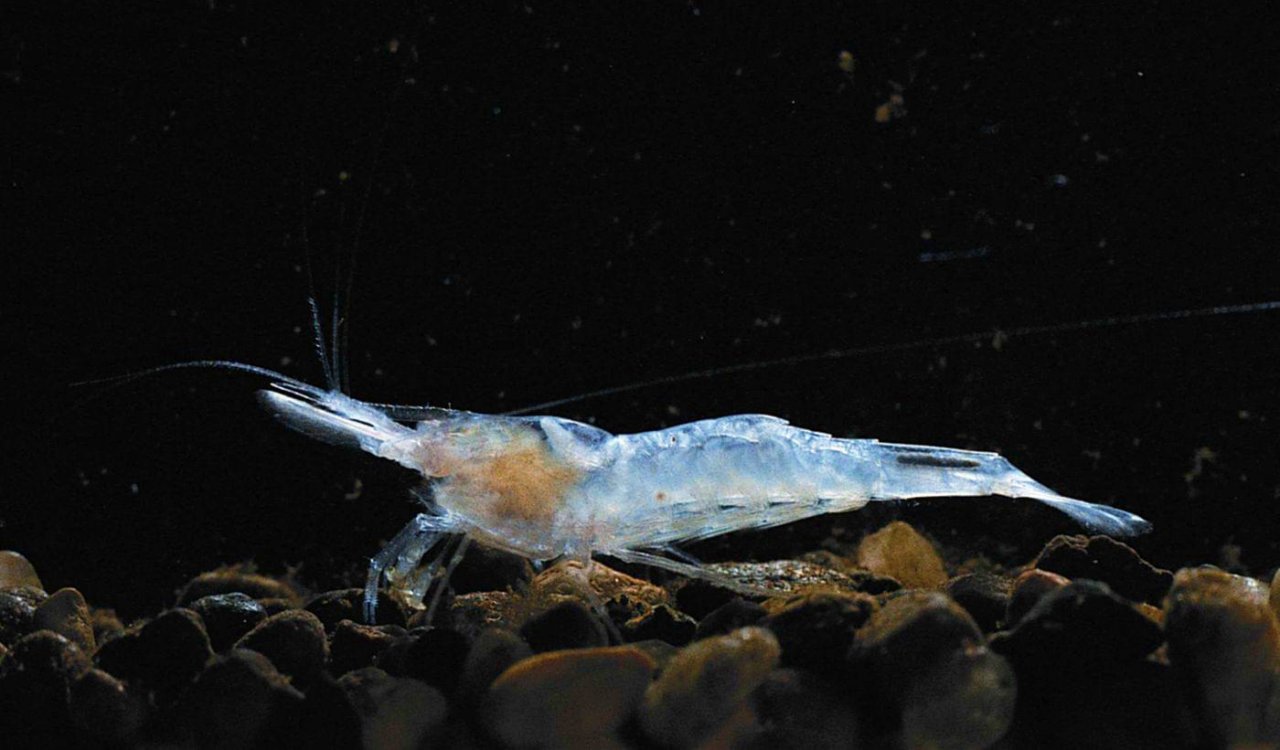
Kentucky Cave Shrimp
- Usually Found: Mammoth Cave National Park in Kentucky, USA
The Kentucky Cave Shrimp is found in caves all over the U.S. State of Kentucky. You can see them in Barren County, Edmonson County, Hart County, and Warren County. It should be pointed out, however, that are mostly found in the Mammoth Cave National Park in Central Kentucky. Here the shrimp feeds mostly on sediments that washed into the cage from the movement of groundwater. Unlike other shrimp, this species does not have any eyes and its shell does not have a pigment. In fact, the species is almost entirely transparent. This too is not shocking to see for an animal that exclusively spends its time inside caves, as it does not see or experience any sunlight.
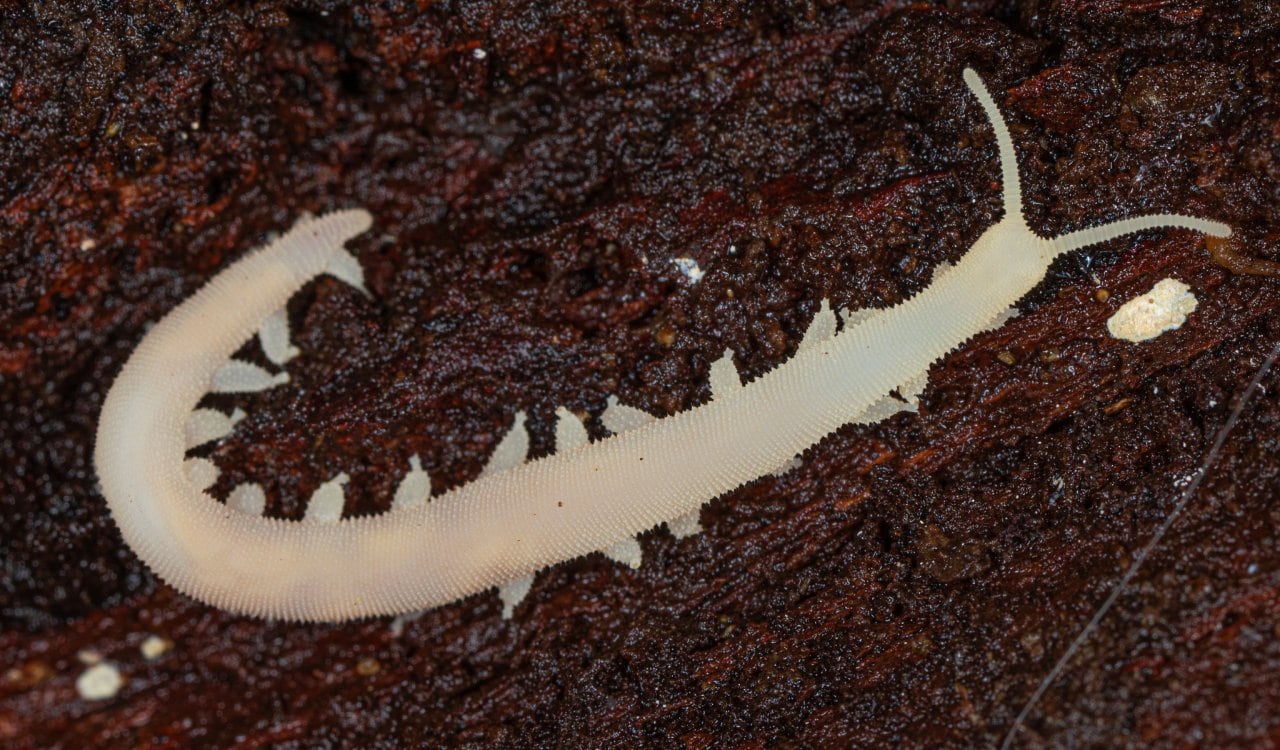
White Cave Velvet Worm
- Usually Found: Wynberg Cave & Bats Cave Systems in Table Mountain, South Africa
The White Cave Velvet Worm is a very rare species. They are exclusively found in two cave systems within Table Mountain, South Africa. Those are the Wynberg Cave and Bats Cave. It should be pointed out too that this is the only exclusive cave-dwelling species found in either cave system. The species contains 18 pairs of clawed legs, which allows it to keep traction throughout the cave systems. However, the last pair of legs are reduced in size. On an unsurprising note, the species also does not have any eyes as they do not need them. Like other velvet worms, they practice matrotrophic viviparity. This is the act of mothers retaining eggs in their uteri and supplying nourishment to their young directly to their embryo. Yet they do this without a placenta.

Cave Beetles
- Usually Found: Caves Worldwide
There are so many different types of Cave Beetles that we could likely do an entire article on “just” this species. It’s pretty obvious that means that the species in some form can be found in caves all over the world. That is key to point out, of course. The species does not get its name by accident. They are traditionally found only in cave systems and do not pop in and out as many other large insect groups might. It’s key to point out too that these beetles evolved to have specialized abilities that allow them to live in these environments 24/7. The Leptodirus species (the first cave beetle ever discovered) could not be taken outside of the cave environment and be capable of survival. Its shell could not handle the UV rays and its senses are specially evolved to handle cave environments exclusively.
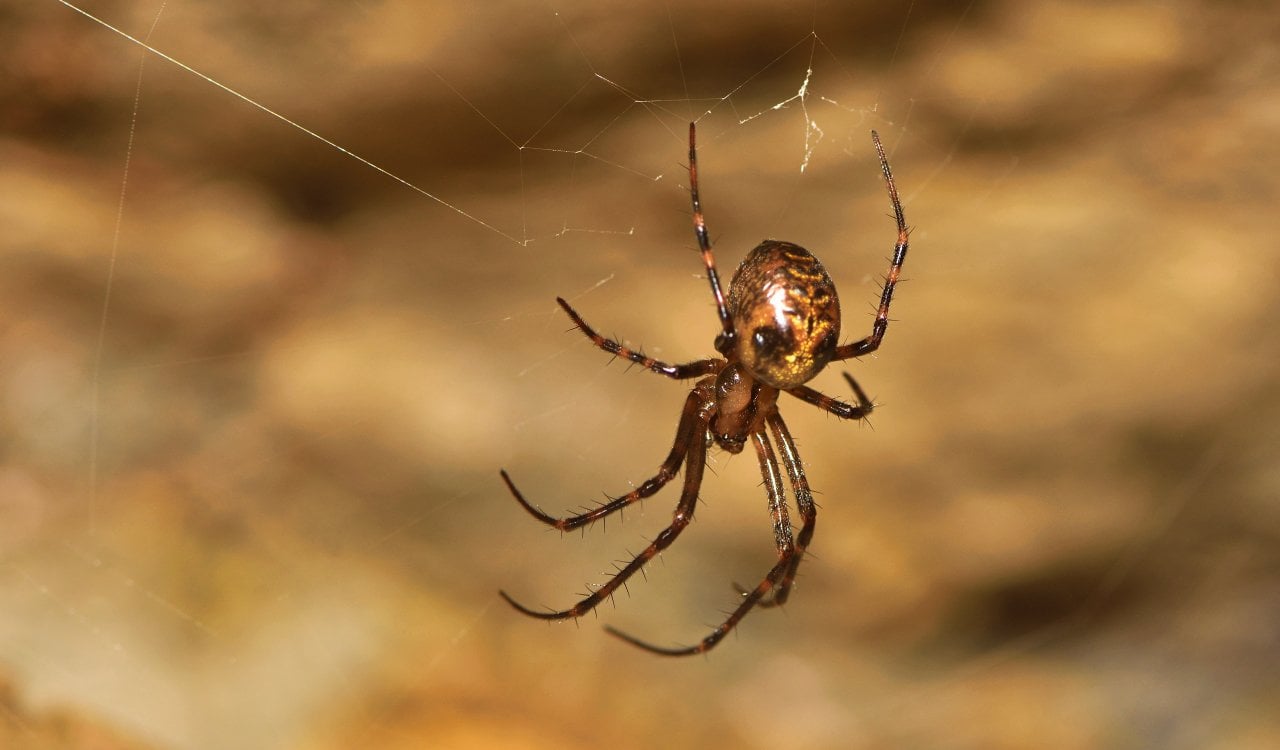
European Cave Spiders
- Usually Found: European Caves, North Africa, Japan, & Both Korean Nations
When it comes to spider species, we feel the European Cave Spider is fascinating. This is a long-jawed orb-weaving spider, which is pretty compelling. They are known for building wheel-shaped webs but do so in a spiral form. While this species might be known as the “European” Cave Spider, they are actually found in places like Scandinavia, North Africa, and Korea. They’re even found in island nations like Japan and Madagascar. The species is “photophobic,” which in this context means they get physical pain from flashes of light. Weirdly, they’re also attracted to light. Some believe this is an evolutionary adaptation to spread the species. They actually live in caves due to it being free of light altogether. They will exit caves only at night and sometimes at dusk to hunt, often using a single silk lasso line to swing down upon prey.
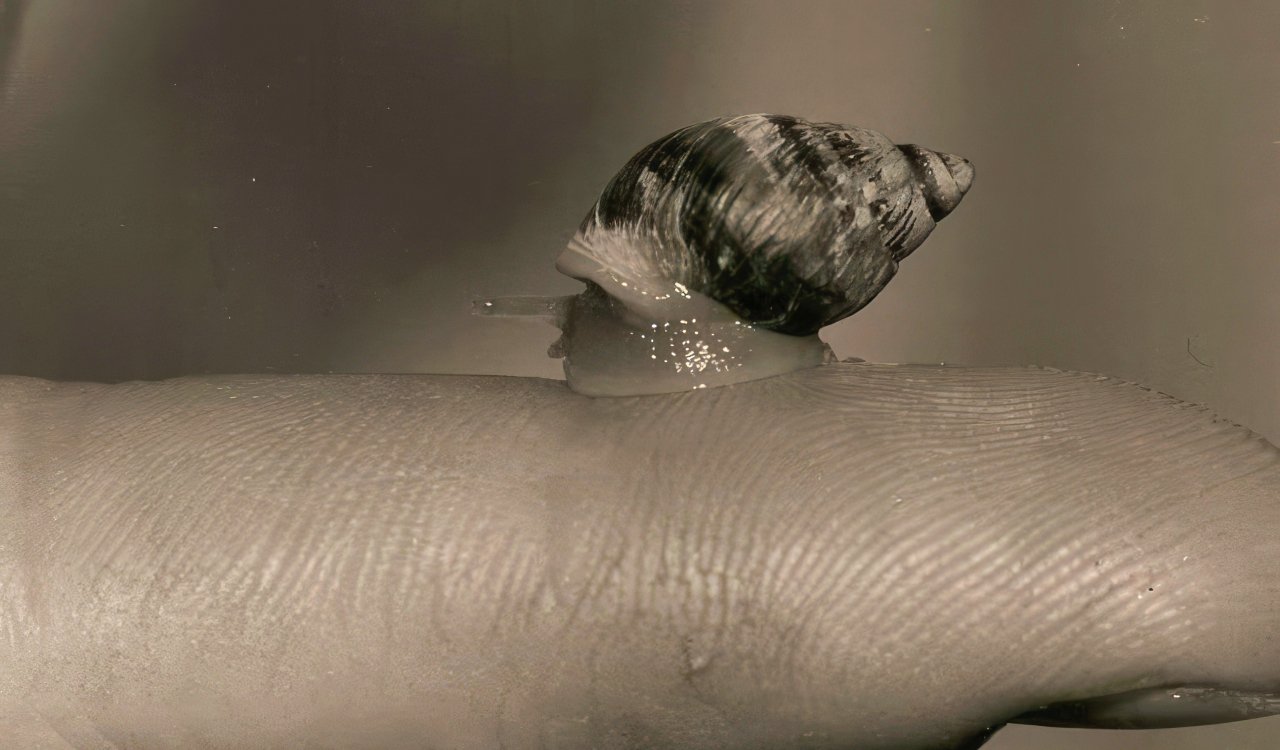
Phantom Cave Snail
- Usually Found: Pecos River Basin in Texas, USA
First described in 1935, they were misidentified to be a different type of snail species. After many years and detailed examinations, even genetic sequencing transfers, they were re-identified in 2010. Today, the Phantom Cave Snail is known as a member of the Pyrgulopsis family. The species is found exclusively in the lower Pecos River Basin in Texas. This is a very small freshwater snail species that contain an operculum, which is a calcium-based shell that can sort of look horn-shaped. The species is listed as Vulnerable by the International Union for Conservation of Nature, and for good reason. It is rare to come across the species even where it is endemic. It is so rare, in fact, that finding images for this section proved to be incredibly difficult.
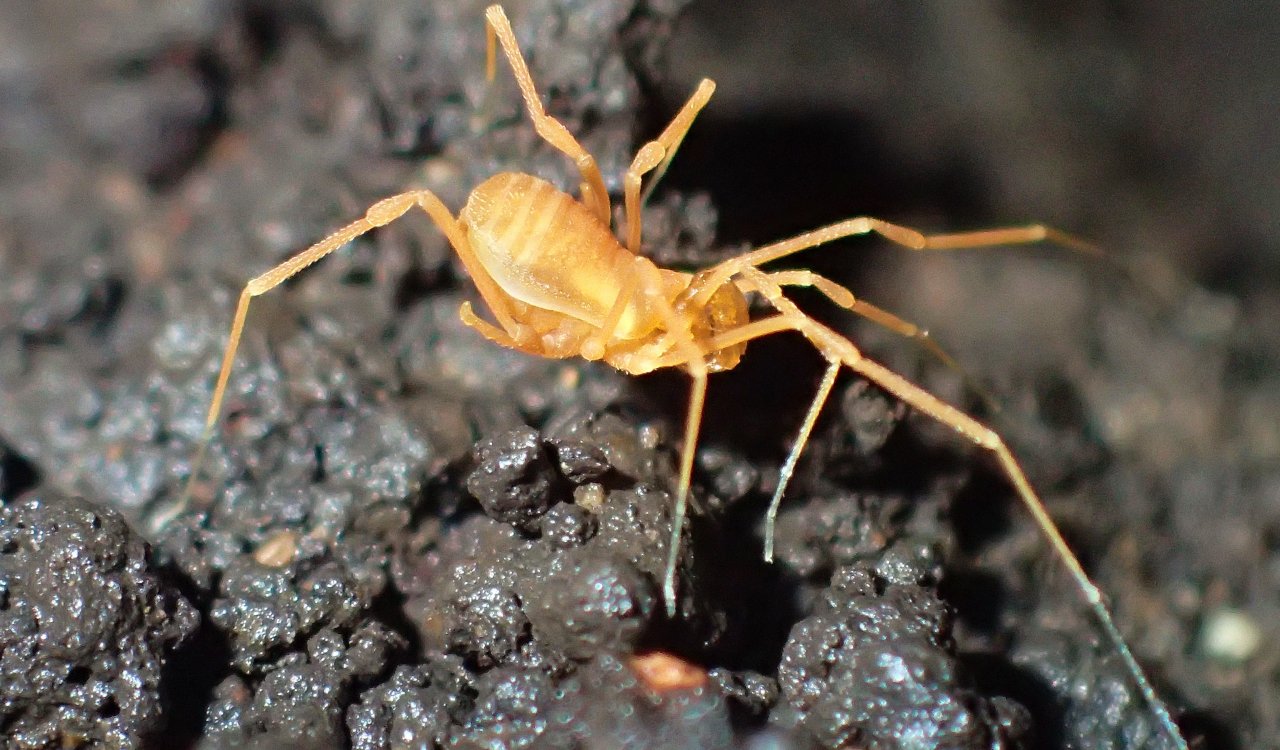
Bone Cave Harvestman
- Usually Found: Travis & Williamson Counties in Texas, USA
Harvestman spiders belong to an arachnid group called “Opiliones.” These spiders do not possess any fangs like the rest of their arachnid cousins and have weak jaw muscles. You might know others in the species like such as Daddy-Long-Leg Spiders, for instance. They might come across as creepy animals but pose no threat to humans. The Bone Cave Harvestman is only found in Texas, mostly in the limestone caves within Travis and Williamson Counties. The species does not possess any eyes or body pigment, and the long legs it has are really just for survival while moving around caves. While they do live in caves, the species is oddly sensitive to humidity and cannot live in dry conditions. Thus, they seek out areas near water inside caves.
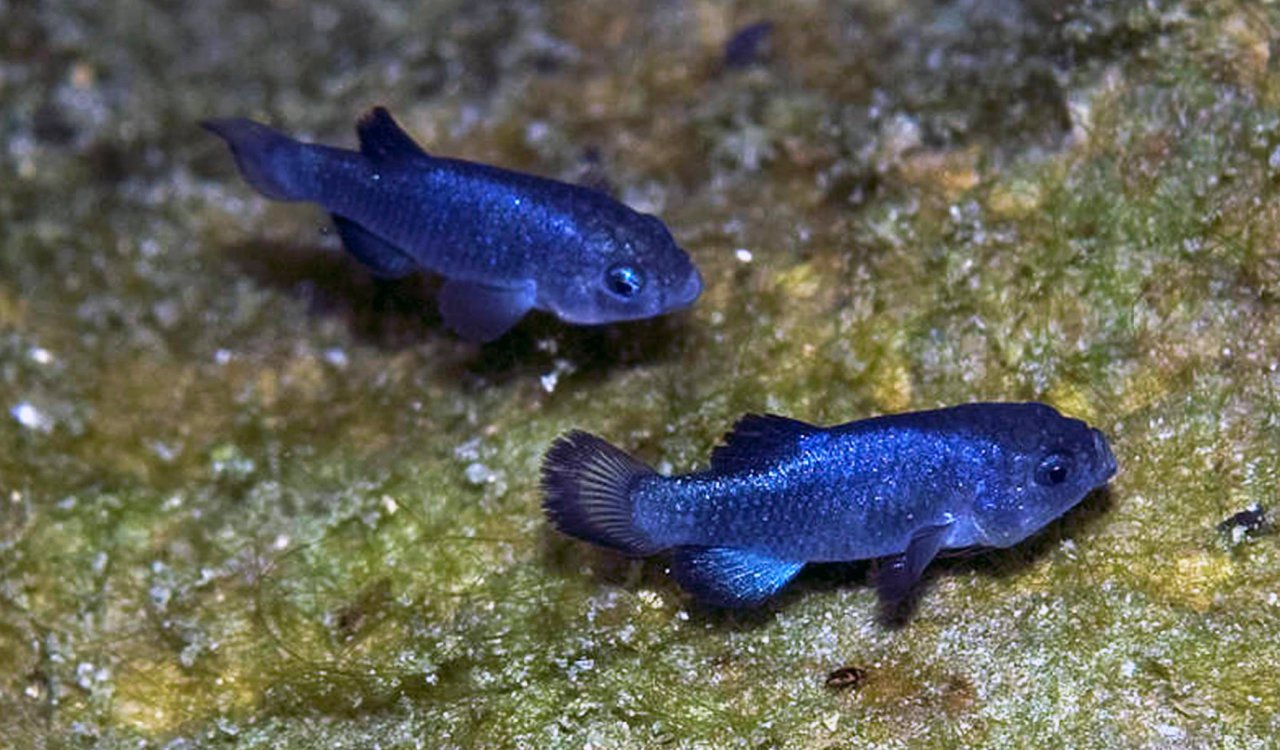
Devil’s Hole Pupfish
- Usually Found: Devil’s Hole in Nevada, USA
The Devil’s Hole Pupfish is only found in Devil’s Hole, a water-filled cave in the state of Nevada. The species is incredibly beautiful for cave-dwelling creatures, yet they are still creepy animals as well. The look is pretty after a bit but if you ran across this fish randomly it would catch you off guard. Sadly, the species is critically endangered yet still consumes every available food resource in Devil’s Hole, even diving beetles. While mating takes place, the females produce very few eggs. Plus, survival from egg to adult is sadly low. In fact, most of these pupfish live between 10 to 14 months only. It is clearly a small fish and they vary in color based on their sex. Males are bright metallic blue while females or juveniles are yellowish. The most defining trait of the species is its pelvic fins, and you can see why.
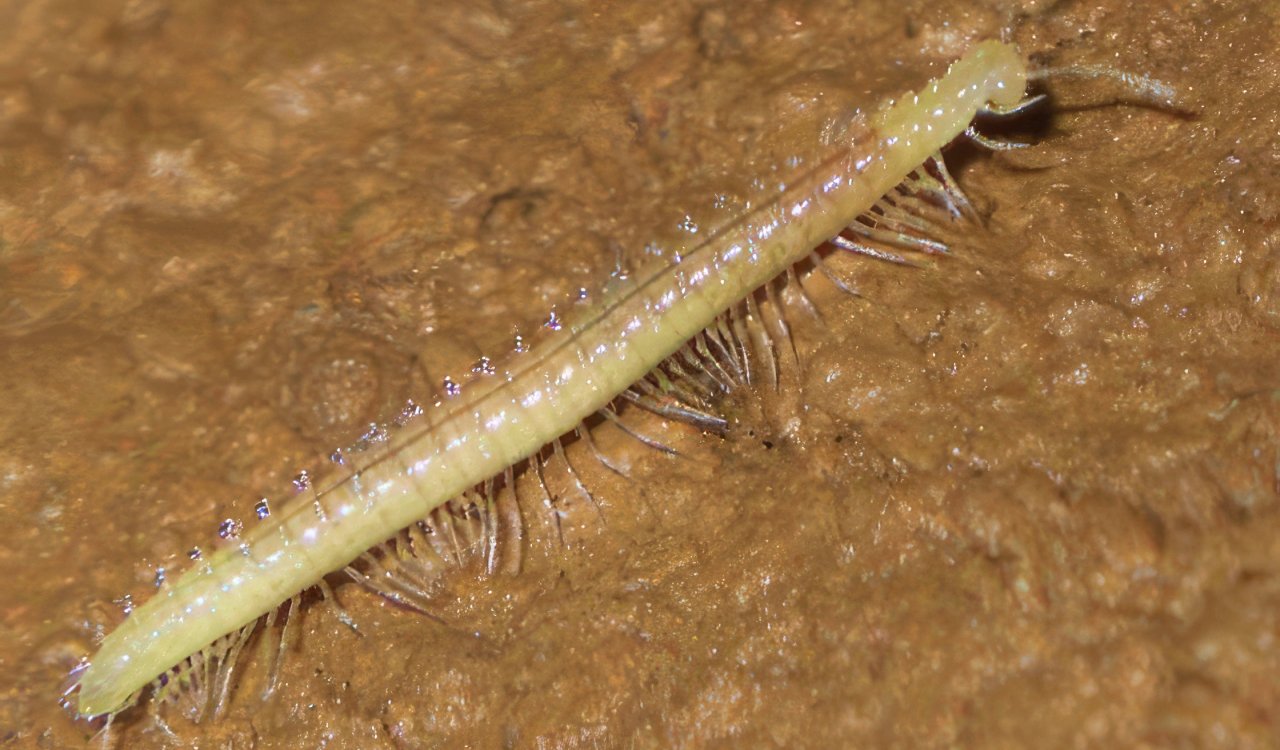
Luray Caverns Blind Cave Millipede
- Usually Found: Four Virginian & Three West Virginian Counties
The Luray Caverns Blind Cave Millipede is typically found in the upper Potomac River drainage in four Virginia counties as well as three West Virginian counties. As of this writing, it has been spotted in 12 caves within these areas. Of course, the big one is in the Luray Caverns where it was first found and described. The species is not just blind but also completely eyeless. It has rows of very elongated segmental setae, which extend in rows along the dorsal side. Naturally, the amount found is why we call it a millipede. Like many cave-dwelling species, this millipede is completely white. They’re pretty creepy animals to see in a cave, mostly because millipedes rarely appear in such a color. Of course, millipedes are creepy animals on their own so a weirder color just throws everything off!
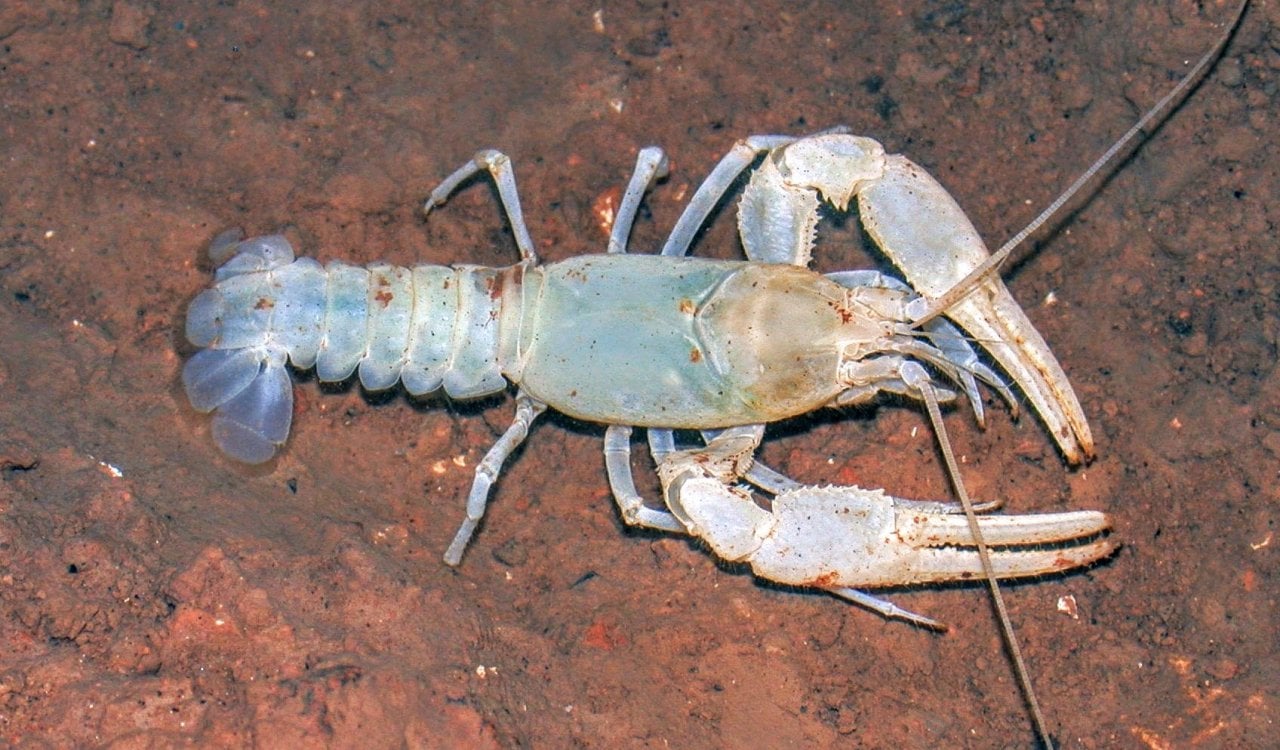
Benton County Cave Crayfish
- Usually Found: Caves in Arkansas, USA (mostly in Benton County)
When we talk about creepy animals that live in caves, these guys need to be near the top for sure. They are native only to the state of Arkansas, in four different cave locations. The Benton County Cave Crayfish is sadly endangered, and due to its lack of mating, it is unknown how long it’ll survive. The species is around 48 millimeters or 1.8 inches long. While they have adapted to groundwater environments, this is usually only within caves. This crayfish species lacks pigment, making it completely white and sort of translucent. It does have eyes, even if they are rudimentary. The body and claws have numerous stiff hairs and its rostrum is crested with small spines. It is theorized that we might not have very long to see the species in the wild unless something can be done to protect the population and encourage mating.
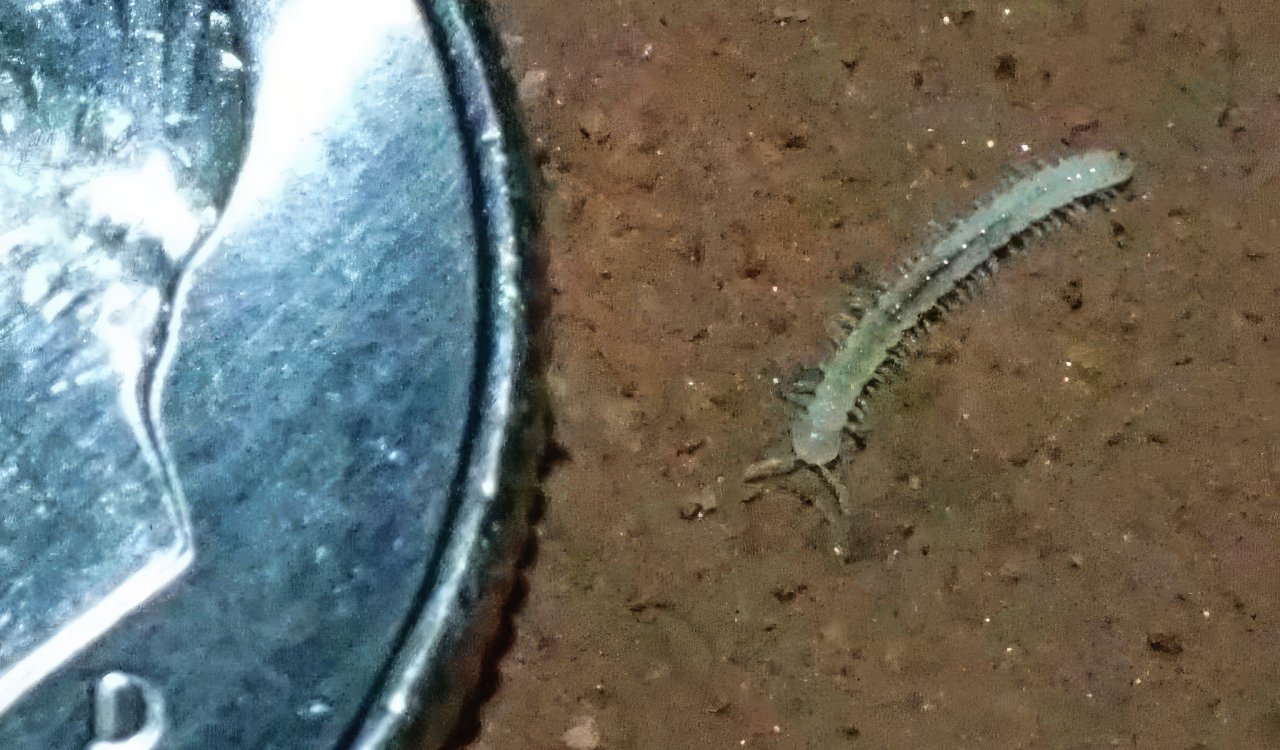
Youngsteadt’s Cave Millipede
- Usually Found: Boone County & Searcy County Caves in Arkansas, USA
Speaking of the caves in Arkansas, another very rare species can be found here. As of this writing, the Youngsteadt’s Cave Millipede has been found in seven caves in both Boone County and Searcy County. The name of the species comes from who discovered it. This ghostly white millipede was found by Norman and Jean Youngsteadt back in 1976. While they did discover and describe it, the millipede was not considered a new species. In fact, it took nearly 30 years before science agreed that it was an entirely new species when in 2003 it was given the distinction. Then, of course, named after who discovered it. Still, it is one of the creepy animals we never want to run into.
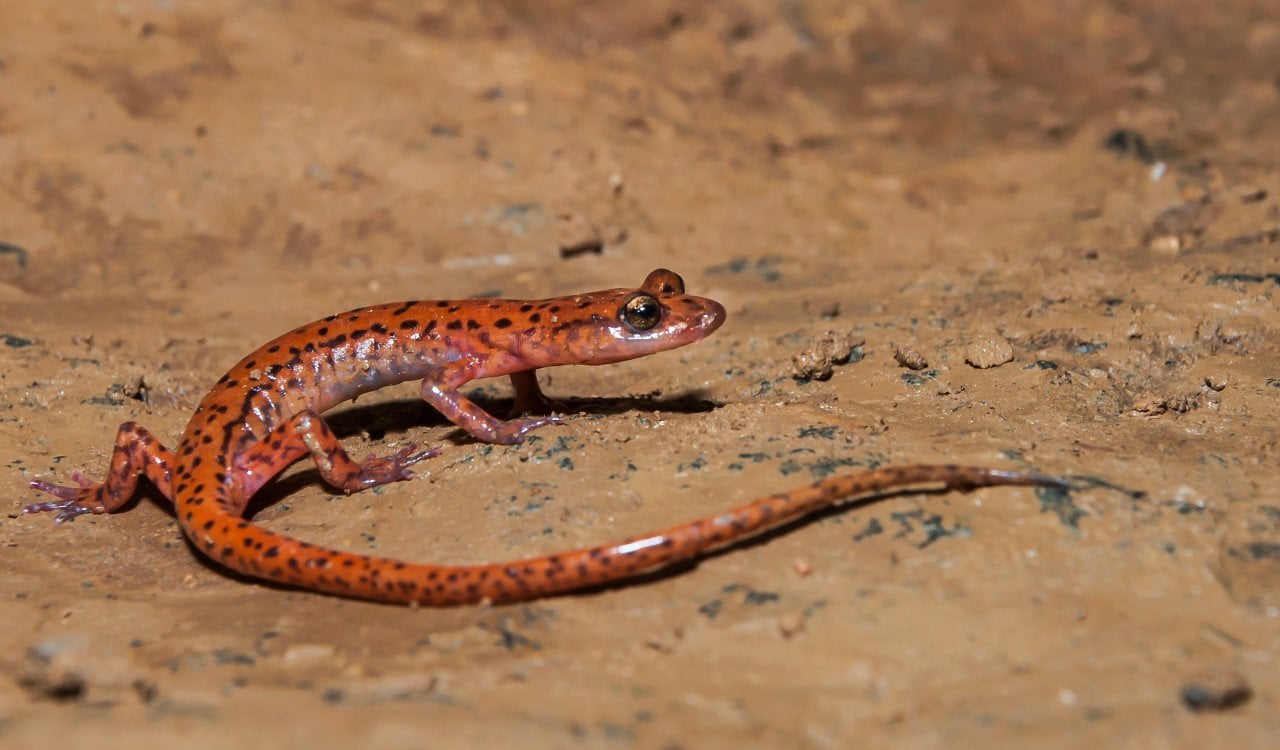
Red Cave Salamander
- Usually Found: Alabama, Arkansas, Illinois, Missouri, Kentucky, Virginia, West Virginia, Oklahoma, Tennessee, Kansas, Indiana, & Ohio, USA
This species has a few different names. While they are known as the Red Cave Salamander, others call it the Spotted-Tail Salamander or simply “Cave Salamanders.” All make sense. It is distinct for its reddish-orange coloring. While the body is typically red or orange, it also has black spots all over the head, body, and tail. Of course, they also live and mostly exist inside cave environments. Usually, they will be found in either limestone or sandstone caves. Here they prey on various insects and arachnids, as well as worms and snails. One interesting thing about this amphibian species is that it is relatively large (4 to 8 inches) but also lungless. Its large prehensile tail makes up 60 to 65% of the total body. What is so compelling is that in spite of lacking lungs, it gets around just fine outside of water environments.
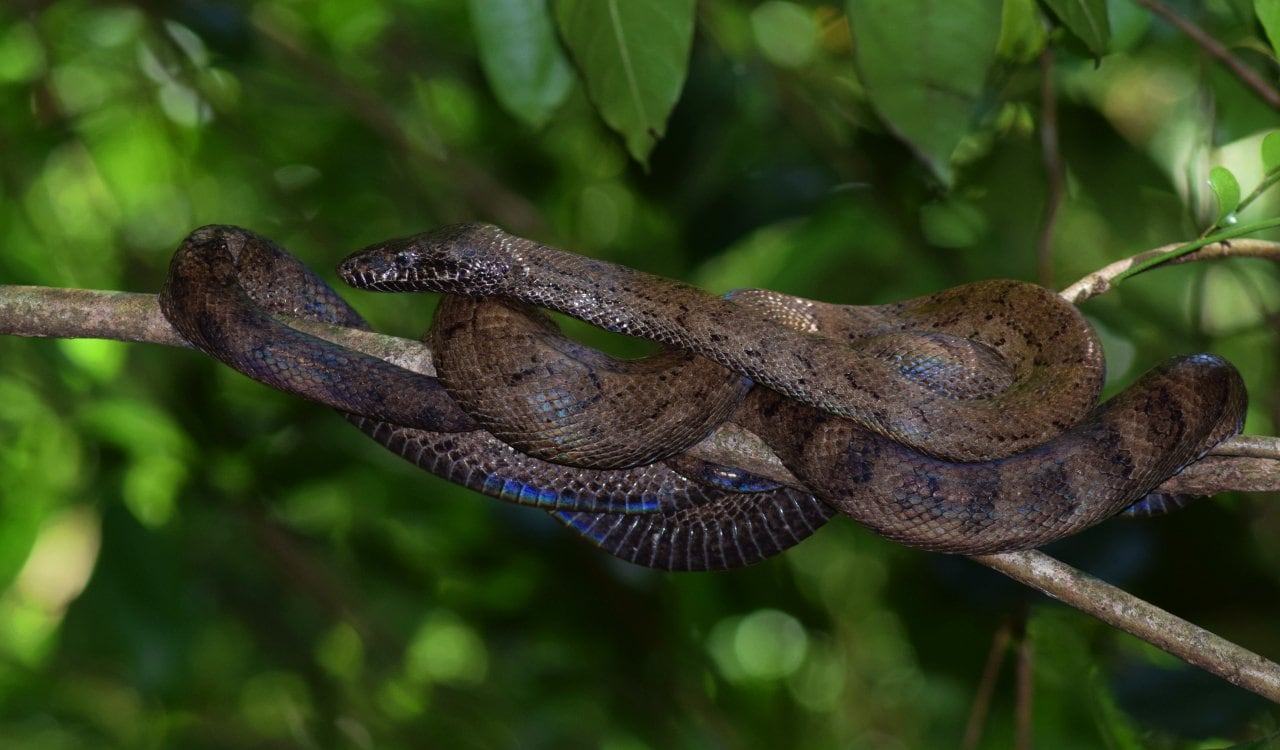
Puerto Rican Boa
- Usually Found: Puerto Rico
The Puerto Rican Boa is endemic to only one place on the planet, we’ll give you one guess where that is. If you answered “Puerto Rico,” you win the big prize! This terrestrial snake species is known for being able to grow to slightly over six feet in length. They usually feed on smaller animals like rodents, lizards, birds, and even bats as well. While this is certainly worthy of being on most creepy animals lists, what makes it work for one connected to caves? Well, this boa constrictor species is commonly found in caves all over the region. While they are typically found in wooden or rocky territories, they’re also heavily known for being in caves. This is so common that people are warned to look out for them if they go into any cave on the island.
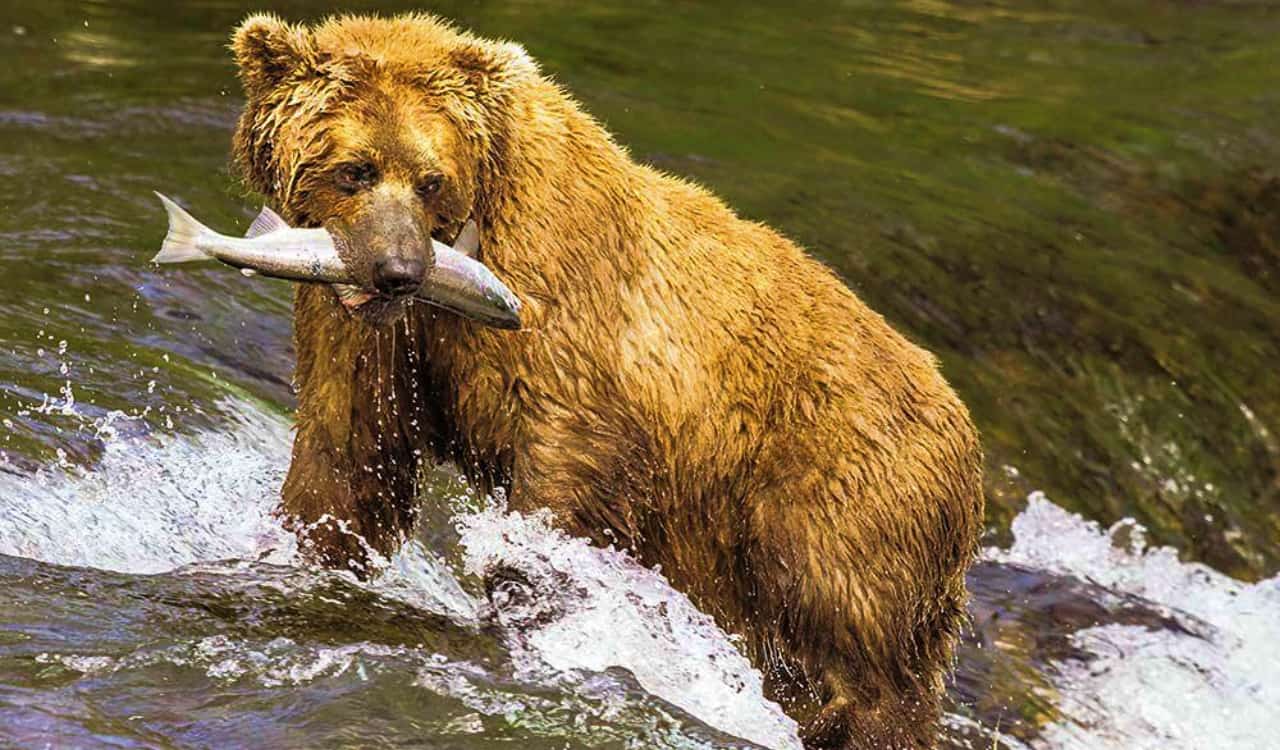
Bears
- Usually Found: Worldwide
It is true that bears leave their cave environment every day to get food. Yet one cannot claim that they do not live in caves when most tend to make their home inside of them. In North America, bears usually are only found in caves where humans are rarely going to be. Thus, they tend to make their home inside caves within major wilderness areas. While bears live all over the world in numerous climates, there are some bear species that hibernate. This means they will go into a pretty deep sleep for several weeks to months. Before doing this, they will eat a bunch of food so that they don’t have to go out and get anything else. Sadly, climate change is altering bear hibernation times. This has become such a big problem, bears are coming out as much as a month before they are supposed to.
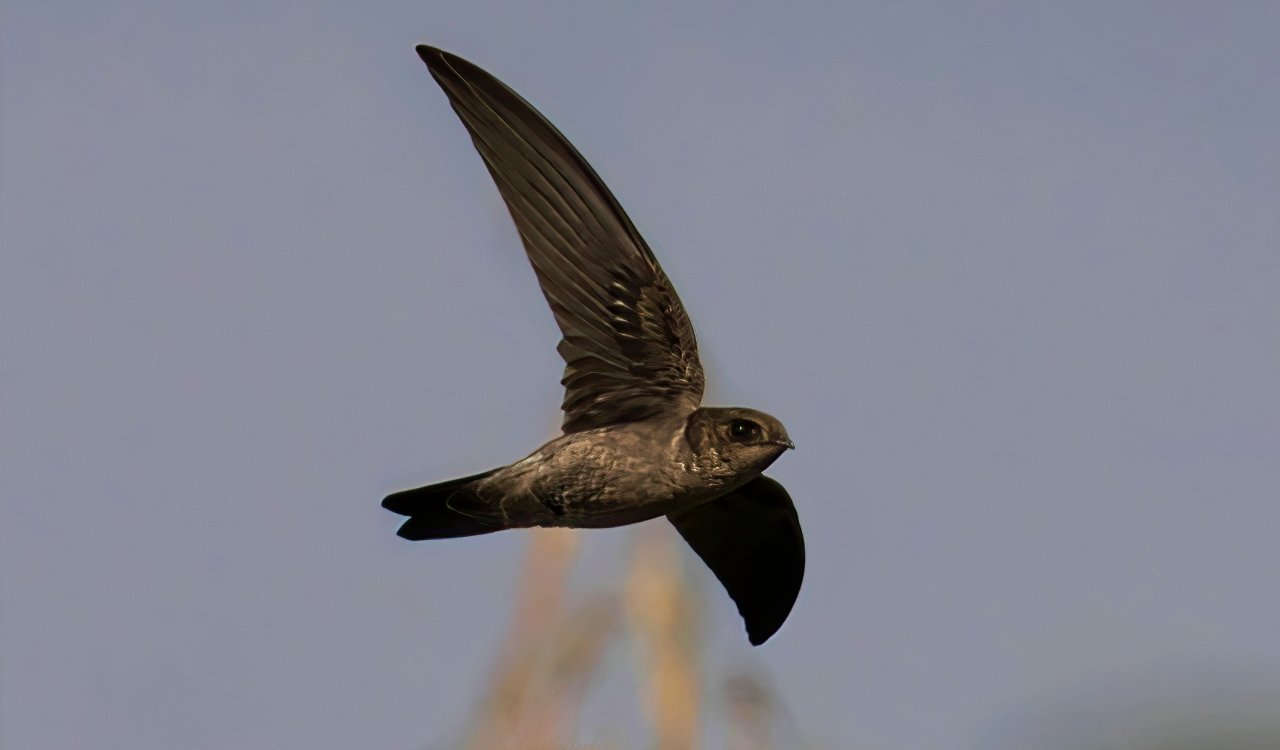
Swiftlet
- Usually Found: Asia, Pacific Islands, Northern Australia
Swiftlets are incredible birds. Yes, they are some creepy animals to come across randomly, but they usually won’t attack humans. The genus, Apodidae, is made up of thirty different species that are found in Asia and the Pacific Islands. Well, along with Northern Australia somehow. They’re only found in tropical or subtropical regions. The species is known for a few key things. First, they have narrow wings for faster flight. Their beaks are surrounded by bristles that allow them to catch insects in mid-flight too. They also differ from all bird species due t their effective echolocation abilities. This ability allows them to travel/fly in complete darkness. That is why Swiftlets are often found in caves. These areas are so important to the species that they nest and breed in these environments.
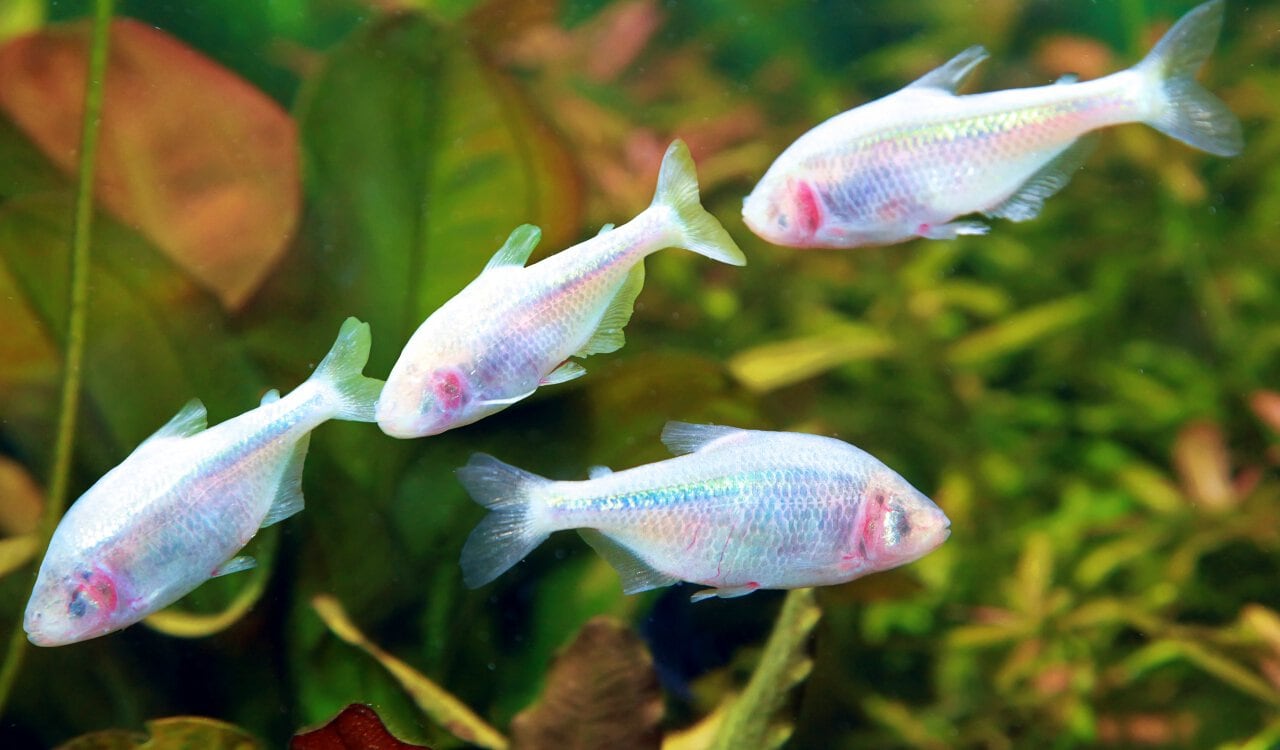
Mexican Tetra
- Usually Found: Mexico
It is important that we point out that there are two forms of the Mexican Tetra species. One version of the fish species has eyes and several different colorations. Yet those that live in caves have lost all pigmentation and do not have eyes at all. The cave version is pretty cool, as it uses a form of echolocation like other blind species. While the cave-dwelling version is clearly meant to remain in the cave environment, they are actually pretty popular among aquarists. This is why you’ve probably seen this species in a major aquarium you’ve visited in the last number of years. While the species gets its name from the region it’s located in, we should point out it’s also found in Texas. The non-cave version can also be found in the Rio Grande River, which travels through the United States and Mexico.

Kaua’i Cave Wolf Spider
- Usually Found: Kōloa-Poʻipū region of Kaua’i, Hawaii
When you think about a wolf spider, you’re thinking about an incredibly creepy species of spider. While the Kaua’i Cave Wolf Spider is not exactly the prettiest spider species on the planet, it’s usually harmless to humans. Native to the Kōloa-Poʻipū region of Kaua’i, Hawaii…the species differs slightly from other wolf spiders in terms of size. They usually only get to 0.8 inches, and they also produce 15 to 30 eggs per clutch which is much more than you see from others. The female will carry the egg sac in her mouth until the young hatch too. The species is entirely blind without any eyes whatsoever, and are obviously in caves. Yet unlike other species on the list, they are in caves within a lava flow. Unlike other wolf spiders, this species tends to feed entirely on decomposing plant matter.
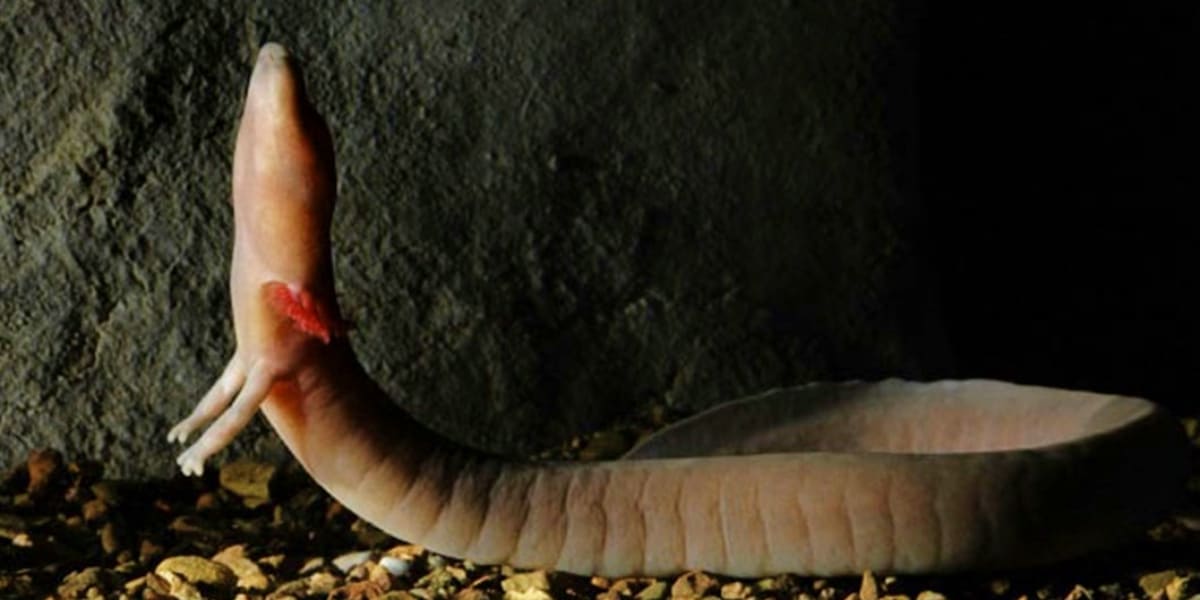
Olm
- Usually Found: Central & Southeastern Europe
The Olm species is one of the creepy animals that just makes your skin crawl. They are completely harmless to humans and will not bother anyone, but they are unsettling to look at for sure. Contrary to what you might be seeing, this is a salamander species. Like other animals on this list, the Olm is blind. The species does have eyes but they are underdeveloped. That has resulted in more powerful senses to make up for the lack of eyesight, such as smell and hearing. It is also essentially lacking all pigmentation on its skin, and it can sometimes appear translucent under the right light. Unlike many other salamanders and even amphibian species, the Olm does not leave the water as it is entirely aquatic. Thus, it eats, sleeps, and even breeds completely underwater. They also live an incredibly long time, up to 100 years in fact!
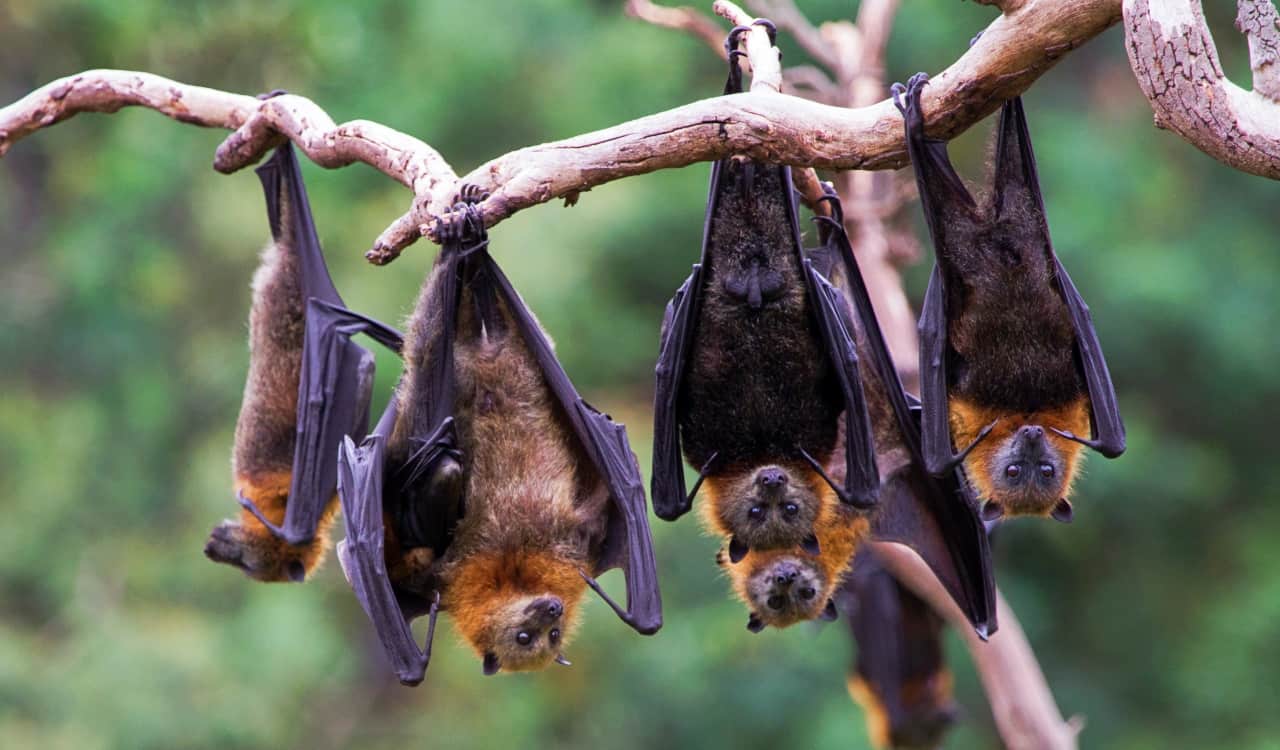
Bats
- Usually Found: Worldwide
Look, people, we’re not going to have a list of cave-dwelling species and leave off bats. Especially when we reference creepy animals! While there is such a thing as “vampire bats,” being bitten by one will not make you a vampire. Nor will it make you into a bat. Although, they are the only bat species that dines in blood. We know, literature and movies lied to us! Bats usually eat local fruits but will also eat smaller insects like beetles, moths, and mosquitoes. Bats are known for their incredible echolocation abilities, which are thought to be the best among all who utilize the ability. Naturally, bats make their home in caves and aren’t a fan of light. However, they leave caves all the time. It usually only happens at night, however. We assume they are going into their local city to fight crime.
Where Do We Find This Stuff? Here Are Our Sources:
United States Department of Agriculture (USDA)
United States Fish & Wildlife Service
Missouri Department of Conservation
National Wildlife Federation (NWF)
United States National Park Service
United States Forest Service
World Wildlife Fund
Hawaiian State Division of Forestry and Wildlife
National Public Radio (NPR)
Cornell University
Smithsonian National Museum of Natural History
